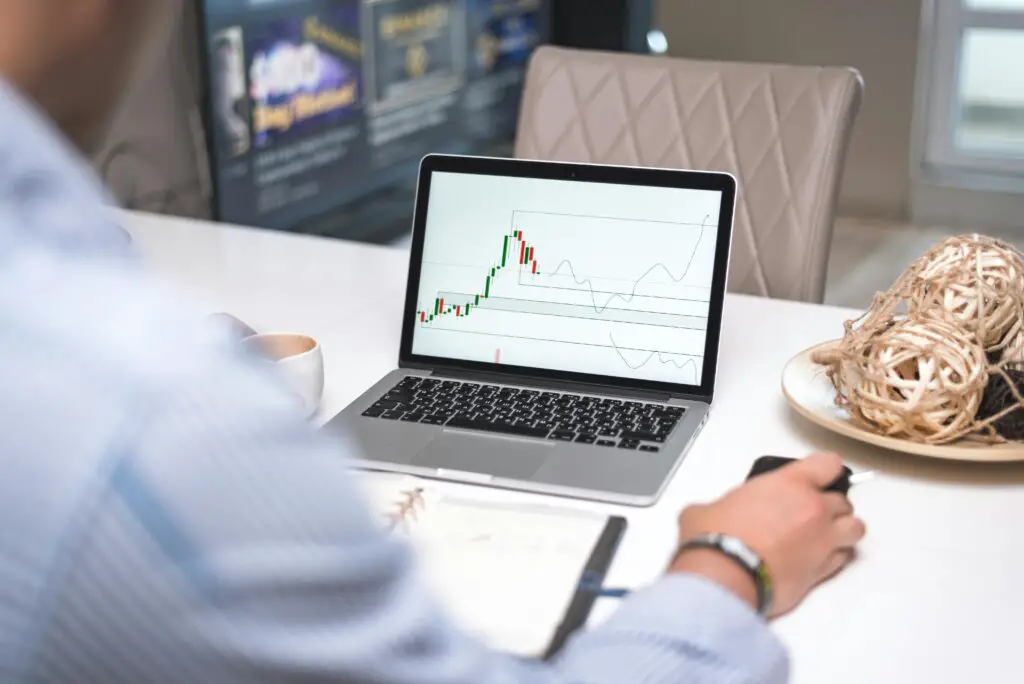Forex scalping, sometimes known as scalping, is a popular trading strategy in which investors try to make money of small swings in market value. This method involves opening and closing a number of positions in a brief amount of time, typically minutes or seconds. Scalp trading benefits from the quick swings in the market, in contrast to lengthy trading tactics that concentrate on important price moves.
An Overview of Evolution and History
In the past, scalping was an important component of the forex market, giving traders the chance to profit from swings in the market. Scalping has changed along with the forex market because of developments in platforms and technology that allow for faster and more efficient execution. Scalp trading presents an interesting and different strategy for traders looking for quick earnings and an increase in excitement.
Knowing the Fundamentals of Scalp Forex Trading
Essential Ideas and Phrases
To be successful in scalping, one must understand the basic terms and ideas. The phrases leverage, pips, and spreads are important to understand. Comprehending these ideas helps traders navigate the rapid fire landscape of scalp trading.
How Other Trading Styles Differ from Scalp Trading
Because it concentrates on immediate market swings, scalp trading differs from other trading methods like swing or day trading. Scalpers work on a far shorter time frame than swing or day traders, who can hold positions for days or hours. Throughout the trading session, achieving numerous small profits is more important than aiming for a massive gain from a single trade.

Scalp Traders Risk and Gain
Outstanding risk often accompanies tremendous return, and scalping is no different. The chance of rapid losses balances the potential for swift profits. Owing to the rapid trading, even minor losses can add up rapidly. Successful risk management and a disciplined strategy are essential for scalp trading success.
The Equipment Used in the Trade
Important Equipment for Scalpers
Scalpers use a range of instruments to carry out their plans. These include current information feeds, advanced trading platforms, and dependable and quick internet connections. Charts and indicators, two essential tools for technical analysis, are also necessary for spotting trading chances.
Selecting the Appropriate Broker for Scalping
Not every broker is appropriate for brief trading. It is important to select a broker that provides low spreads, quick execution, and little slippage. Before opening an account, it is important to understand the broker’s policies, as certain brokers may have limitations on scalping.
Technology’s importance and quick execution
When scalping, quickness is important. Slowdowns of only a few seconds might mean the difference between profit and loss. Advanced trading software, reliable computers, and fast internet are all necessary for an effective scalping setup.
Formulating a Scalp Trading Plan
Crafting an effective scalping strategy takes careful preparation, discipline, and flexibility, among other essential elements. Here are a few specific components to think about:
Determining the State of the Market:
For scalping to be successful, it is necessary to comprehend the market state. Scalpers must determine whether the market is trending, range, or extremely unstable. This assessment determines, in part, the optimal tactics and resources to employ.
Selecting Appropriate Currency Pairs:
Not every currency pair lends itself well to scalping. Scalpers usually focus on highly liquid pairings with narrow spreads, which allow them to enter and exit the market quickly and easily.
Choosing the Correct Time Frame:
Making snap decisions based on sudden price changes is a key scalping component. As a result, traders often use extremely brief timeframes, such as single, five, or fifteen minute charts. These intervals offer comprehensive pricing data and aid in more precise trading opportunity identification.
Determining Points of Entry and Exit:
An organized approach is necessary for entering and exiting transactions. Scalpers often employ technical indicators and chart patterns to find entry positions. One can use take profit levels, trailing stops, or the emergence of reversal signs to pinpoint exit points.
Putting Risk Management Strategies into Practice:
Any trading strategy must include risk management, which is extremely important for scalping. To reduce possible losses, scalpers should define their risk tolerance level and place orders to stop losses. The risk of each deal should be modest, usually between one and two per cent of the entire trading capital. This strategy guarantees the account life in the market and helps shield it from significant losses.
Technical Evaluation for Scalp Trading
Important Markers for Scalpers
Technical indicators are quite important when scalping. Bollinger Bands, relative strength indexes, and moving averages are a few of the most widely utilized indicators. These indicators aid traders in recognizing patterns, occurrences of overbought or distressed circumstances, and possible turning points.
Examining Patterns and Trends in the Market
Successful scalping requires an understanding of market trends and patterns. The ability to recognize a trend, range, or breakdown in the market must come quickly to scalpers. Due to this analysis, they could select the best trading strategy.
The Significance of Resistance and Support Levels
In scalp trading, levels of support and resistance are important. These levels show the expected places of buying or selling pressure on the price. By determining these levels, traders can make informed choices regarding the entry and exit points of trades.

Managing Risk in Scalp Trading
Establishing Take Profit and Stop Losses Orders
In scalp trading, stopping losses and taking profit orders are important instruments for risk management. By effectively cancelling a position if the price moves against the trader, a stop loss order helps limit losses. When the price hits a predefined level, a take profit order ensures that profits are locked in.
Controlling Leverage and Size of Position
Leverage helps traders manage a bigger position with less money. However, even if it can improve earnings, leverage raises risk. Scalpers must exercise caution when determining how much leverage they utilize and how big of a position to take.
The Value of a Risk Reward Calculation
One important component of risk management is the risk reward ratio. This ratio evaluates a trade possible profit against its possible loss. The potential gain must outweigh the risk taken for the ratio to be favorable.
The Mentality of Short Term Trading
Maintaining Concentration and Order
Scalp trading calls for a high level of discipline and focus. Traders need to be able to decide quickly and follow through on their trading strategy. Emotional control is important since greed and fear can cause rash judgments that cost money.
Stress Reduction and Stay Away from Overtrading
Scalp trading is rapid and can be stressful. Traders need to learn how to control their stress levels and refrain from overtrading, which can result in burnout and lousy judgment. Taking pauses and preserving a healthy equilibrium between work and life is important.
The Impact of Feelings on Trading Choices
Emotions can heavily influence trading decisions. Scalpers must be conscious of their emotional states and refrain from allowing feelings to control them. Creating and following a trading plan can help reduce the impact of emotions.
Scalp Investing in Various Market Situations
Profiting from unstable markets
Volatile markets offer more potential for scalping because they include more significant price swings. However, volatility also raises risk, so scalpers must employ proper risk management strategies.
Techniques for Ranging vs Trending Markets
Various market conditions call for multiple approaches. While scalpers may concentrate on range trading in ranging markets, they may also employ following trend methods in trending markets. The secret to profitable scalping is to adjust to changing market conditions.
Changing with Economic Events and News
The currency market can be greatly affected by news and economic events. Future news releases should be known to scalpers in advance so they can change their plans properly. It is important to exercise caution while trading around news events since more volatility can cause prices to change quickly.
Typical Errors in Scalp Trading
Excessive Trading and Following the Trend
Overtrading is an ordinary mistake when scalp trading. It happens when traders place excessive trades in a brief amount of time, which often results in bad choices and losses. Trading quickly and losing money can also result from chasing the market or selling out of fear of missing out.
Disregarding Risk Management Guidelines
In scalp trading, breaking risk management rules is an automatic way to go wrong. Traders should always stay within their stop losses, take profit levels, and never risk too much money on a single transaction.
Not Adjusting to Shifts in the Market
Scalp traders need to be able to adjust to the continuous changes in the forex market. Failure to modify strategies in response to changes in the market may result in losses.

Formulating a Scalp Trading Strategy
Clearly defining your objectives and goals
Scalp trading success requires a clearly defined trading plan. Clear goals and objectives, such as daily profit targets and the maximum amount of losses allowed, should be set by traders. Traders that have a plan are more disciplined and focused.
Establishing a Trading Log and Monitoring Results
Maintaining a trade notebook is valuable for tracking results and identifying areas needing development. Every trade should have specifics recorded, such as the reason for joining and leaving the trade, the result, and any lessons learned.
Constant Improvement and Learning
The world of scalp trading is dynamic and constantly changing. Traders need to commit to lifelong learning and development. This may include staying updated with the newest trading techniques and technological advancements, attending seminars, and researching market patterns.
Automated Systems Function in Scalp Trading
Advantages and Disadvantages of Robotics
Automated trading systems, or robots, can benefit scalp trading. They can complete deals fast and successfully, giving traders more time. However, they do have certain disadvantages, too, such as the possibility of technical problems and the requirement for constant monitoring.
Selecting Effective Trading Software
For scalpers, selecting an appropriate trading program is important. The software must be simple to use, dependable, and quick. It should also complement the trader approach with advanced capabilities like customized indicators and charts.
Maintaining a check on and modifying automated strategies
Traders must keep an eye on things and modify their methods even with automated tools. Since the market is changing, strategies that were effective yesterday might be different today. Success requires that automated techniques be reviewed and adjusted regularly.
Regulatory and Legal Aspects
Comprehending the Needs of Regulations
Scalp traders need to know the laws and regulations in their area. Rules may change depending on the broker and the nation. It is important to abide by every law that applies to stay out of legal trouble.
Preventing Fraudulent Brokers and Scams
Forex scams and dishonest brokers are not unheard of in the business. Traders must choose a broker after doing extensive study and due investigation. Seek out brokers who are popular in the sector and subject to regulations.
Adhering to Trading Regulations
To prevent fines and legal problems, you must adhere to trading regulations. This means following the rules in the trader jurisdiction and the broker policies.
Case Studies and Success Stories
Popular Scalpers and Their Techniques
Scalp trading has become a popular method of success for many traders. Analyzing their methods and experiences might yield insightful knowledge and creative inspiration. Popular scalpers often use distinctive strategies and tactics that have aided their success.
Examples of Successful Scalp Trades in Real Life
Traders can better understand the use of scalp trading methods by looking at actual scenarios of profitable scalp transactions. These case studies emphasize the significance of adaptation, risk management, and timeliness.
Teachings from High Performers
Prominent scalpers have gained important insights from their experiences. These classes offer assistance to aspiring scalp traders. The significance of discipline, risk management, and ongoing learning is often mentioned as the primary takeaways.

Scalp Forex Trading Future
New Developments in Trends and Technologies
Emerging trends and technologies are likely to affect the future of scalp trading significantly. The foreign exchange market is currently being affected by developments in advanced data analysis, artificial intelligence, and machine learning.
AI and Machine Learning’s Effects
The way traders review data and make judgments is changing because to the use of AI and automated learning. These tools provide scalp traders with a competitive advantage by detecting patterns and trends that might not be obvious to the naked eye.
How the Trade of Scalp is Changing
The forex market and scalping are constantly changing. Technologies, techniques, and tools are constantly being developed. Remaining educated and flexible is important for prospering in this continually evolving setting.
Conclusion
A fun and dynamic approach to trading the forex market is through scalping. Although there is an opportunity for rapid financial gain, there are also significant risks. Traders may thrive in this rapid industry by studying the fundamentals, creating a solid trading plan, and always learning and growing. For expert or new traders equally, scalping presents a different yet rewarding challenge.